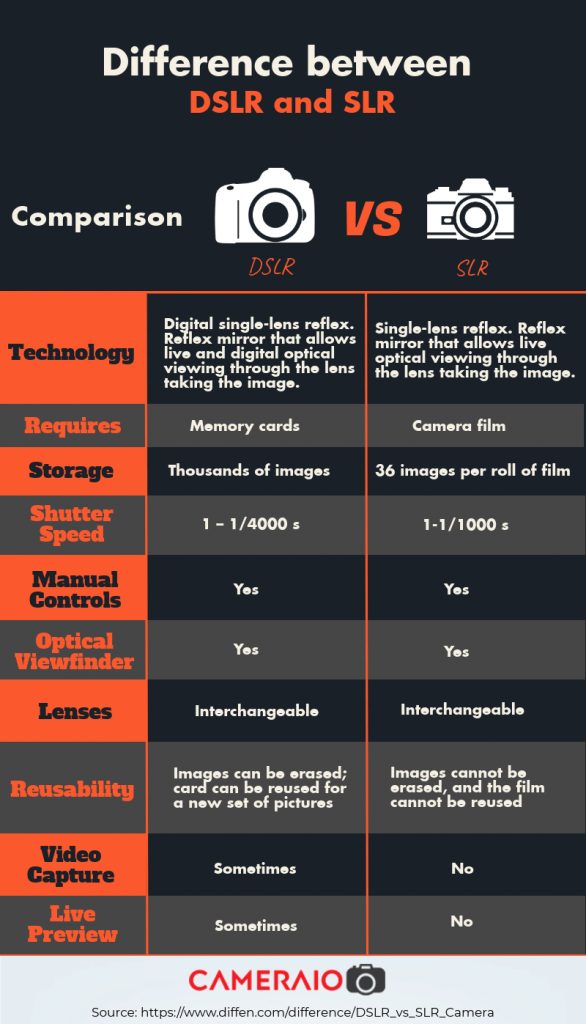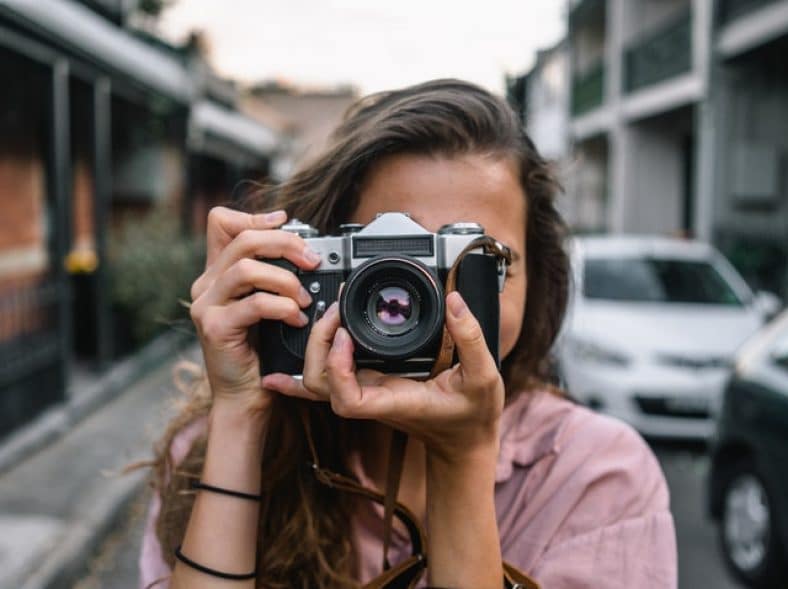There’ll never be a day when photography is no longer beneficial, especially with image technologies continually evolving and camera companies releasing new systems virtually every year, ranging from entry-level digital cameras all the way through to high-end professional systems. While this is excellent news for photographers, it is very easy to be confused.
It’s also getting more challenging for newcomers to pick the correct camera, especially when it comes to DSLRs for those who are just beginning out in the field of photography.
What are SLR and DSLR?
SLR camera (single-lens reflex) and DSLR (digital single-lens reflex camera) are two of the most widely misunderstood terms in the photography field (digital single-lens reflex camera). Considering that most of today’s photographers use this camera, you’re certainly already acquainted with it either by name or appearance.
As point-and-shoot cameras became a huge sensation, SLRs became almost collector’s goods, but they’ve since reemerged as fashionable tools for both amateur and professional photographers.
It’s amazing how a single quote can make such a difference between these two cameras. However, given their significant differences in design and technology, it’s also amazing to see how identical they are.

DSLR Cameras vs. SLR Cameras
So, how do SLR and DSLR cameras differ? This article will evaluate their imaging technology, camera bodies, sensors, performance, pricing, and unique features.
Feature of interchangeable lenses
Both camera types employ interchangeable lenses due to their distinct photographic technology. This means that users can choose lenses for their DSLR or SLR camera based on their photographic needs and shooting techniques.
Technology
Single-lens reflex technology is employed in both DSLR and SLR cameras. It employs an inbuilt reflex mirror that enables the user to see what the lens views and what will be photographed via the camera’s optical viewfinder. DSLRs, on the other hand, have a modest benefit. Some DSLR types mirrorless cameras lacking optical viewfinders provide a rear LCD panel for live digital viewing.
Both SLR and DSLR cameras use a mirror to reflect light entering the lens, enabling an image to be visible through the viewfinder. On the other hand, an SLR camera records the picture on microfilm made out of plastic, glass, and other materials. In contrast, a DSLR records the image and stores it on a memory card in digital format.
The image sensor
The sensor is the most significant distinction between DSLRs and SLRs. SLR cameras are fundamentally interchangeable analog/film cameras, with the “D” (which refers to “digital”) added after the introduction of SLRs incorporating digital sensors. Naturally, digital SLR cameras require memory cards to hold thousands of photographs, whereas SLRs only shoot a limited number of shots.
However, because the SLR is simply one of many types of film cameras, the comparability between DSLR and SLR cameras is not the same as the age-old dispute between digital cameras and film.
Price and value
DSLRs are less costly than SLRs because there are already more DSLRs on the market. If value and cost are more important than convenience, it’s worth noting that SLRs are superior investments because they don’t need to be upgraded as frequently as digital cameras do. Furthermore, SLRs, along with most digital cameras, are expensive collectibles that you may be able to sell for a profit.
Resolution and Quality
Film cameras produce higher-quality images, especially in terms of sharpness, dynamic range, and color. Even today, modern digital cameras can’t quite match the way film catches details. When considering the various kinds of analog sensors and film available, especially in large format, SLRs outperform many consumer DSLRs regarding pixel count.
Physical Features
With the introduction of both SLR digital cameras with antique designs, such as the Pentax KP silver, and SLR cameras with slimmer camera bodies that are more modern, such as Nikon’s F6 camera, it’s becoming more difficult to categorize cameras based on their camera bodies’ appearance.
On the other hand, SLR cameras typically have two-tone colors, more buttons, and no back monitors, while DSLRs typically have a monitor and a single color. SLRs are more metal-based and often heavier.
Capability to record video
Another benefit of digital camera innovation is that almost all DSLR cameras have video recording capabilities, while film photography devices like SLRs do not.
In conclusion
Take into account your personal preferences and shooting style. It all comes down to your shooting style and personal preferences, regardless of which camera you use. Consider which factors are most important to you, such as performance and cost, and see which single-lens reflex DSLR camera model gets the top ranking.
